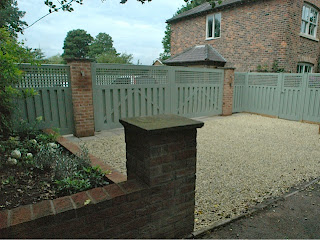Here are a few good reasons why:
- The temperature is not too hot, that often causes stress to the plants and stress to the gardener when there is often not enough time to get around and water new plants.
- It’s not too cold yet to stop root growth, for although apparent growth of plants seems halted (no further leaf or flowers produced) this is a good time for root systems to become consolidated, and to become strengthened.
- It's a good time for plants to become established, ready for a showy spurt of growth when spring comes along.
Trees
- They get established better than in summer with no associated watering problems. ( "What watering problems?” I here you ask!)
- It is much cheaper to buy bare-rooted stock during this ‘bare root’ season from October to March (dependent on the species of tree).
- As mentioned above the soil is still relatively warm, giving the tree a good start in its new position.
Garden Landscaping Video of the Survey, Design & Build
0 comments Posted by David Andersen at Thursday, October 18, 2012Here you can see the stages of surveying a steeply sloping back garden, creating a terraced design to brake up the space into outside rooms and then the process of building the new garden.
The original garden was quite small, but even so had a differential of over three metres from house to back boundary. We created dramatic levels using rendered walling (and the upper wall was actually created using timber sleepers stacked and bolted together, since the upper part of the garden was made of freshly added ground and therefore could not be constructed on with mortar).
Traditional Cheshire Garden Made Modern
1 comments Posted by David Andersen at Friday, August 03, 2012

Getting Your Garden Design to the Build Stage
0 comments Posted by David Andersen at Wednesday, June 20, 2012So you've finally got your garden design!
First off: to save money
Labels: garden designer
A Snapshot of our Garden Transformations in Progress
1 comments Posted by David Andersen at Tuesday, May 15, 2012There has been a hurricane of activity at Garden Magic this
spring. We have garden design projects currently covering the entire Northwest:
Lancashire, Cheshire, Liverpool, Manchester and even Yorkshire!It is always fun to see the transformations in progress,
so here are a few pictures of gardens before and during construction . . . and
soon we will share the finished spaces!
In northwest Lancashire this magnificent home (above, that was once a barn!) has large contemporary windows over looking the back garden. The garden has a steep slope, which we are in the process of using to create a terraced and dramatic landscape mimicking a series of outdoor rooms, for eating, relaxing, and entertaining.
Just started yesterday, the Yorkstone from this traditional garden space in Cheshire (above) was lifted, making way for the transition to a modern look, with simple, clean lines, defined edges and dramatic vistas.
More updates coming soon . . .
Labels: Contemporary garden design
After the long, but thankfully not too cold winter, the prospect of warm sunny days fills us with anticipation. We have been busy through the fall and winter preparing gardens for spring. And now that we are enjoying a taste of the warm days to come things are getting into high gear as our clients all want to have the perfect garden for relaxing and entertaining this summer.
This time of year, with mild temperatures and moist soil, is the ideal time to put plans for your summer garden in place. Planting and preparation done now will reward you many times over when the sun shines and you want the garden to look its best.
Before and After Images of Our Favorite Designs
1 comments Posted by David Andersen at Wednesday, March 28, 2012Here you can see the dramatic transformations created with these before and after images of a few of our past garden design and build projects.
One project has a series of spectacular canals and waterfalls in a minimalist setting, another an elemental garden and fish pond, there is a contemporary deck with a beautiful bright green water feature back drop, an Edwardian courtyard made modern and a large family garden that is both stunning and functional.
New Contemporary Garden - Just Completed!
0 comments Posted by David Andersen at Friday, March 23, 2012Check out this recently finished garden complete with waterfeature, garden lighting, topiary, decking and fine cream coloured contemporary sandstone slabs.
The semi-circular deck has been designed using specially machined, tapered hardwood deckboards. This smaller deck is positioned to catch the morning sun...perfect as a breakfast terrace!
The individual topiary standards (photinia 'Red Robin') make an excellent strong statement....each has a stainless steel spike spot uplighter....helping to create drama and atmosphere.
(Planting is complete but needs time to mature)
Labels: Contemporary garden design
 Sedum is a wonderful option for a green roof being a fairly tough plant that virtually looks after itself.
Sedum is a wonderful option for a green roof being a fairly tough plant that virtually looks after itself.Labels: sedum roof manchester green roof























